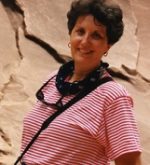Before There Was AOSA
Part I: Socio-economic, Political and Educational Climate
On May 11, 2018, AOSA will celebrate a milestone in its history. On that date fifty years ago, a small group of Orff enthusiasts gathered at the home of Arnold Burkhart in Muncie, Indiana to develop plans for a Midwestern Convocation on Orff-Schulwerk. Before that meeting concluded, this steering committee agreed to the formation of a professional association and that proposed convocation would become the first annual conference of AOSA. Officers were elected, a constitution and by-laws were adopted, and The Orff Echo began publication during the months that followed. The first conference was held at Ball State University and featured headliners Doreen Hall and Arnold Walter, who pioneered Orff Schulwerk in North America. Participants from 22 states and Canada attended. Membership grew to 332 during that first year.
The Executive Board realized that the association would be strengthened by a grass-roots foundation provided by affiliated local chapters. Seven chapters were chartered at the second annual national conference held in Cincinnati in April 1970. Chapter presidents served on the newly initiated National Advisory Board. Seven more chapters received charters at the third annual conference held in Memphis. By the fifth conference, there were 21 affiliated chapters and well over 1,000 national members.
Since its birth and early years, much has been documented about the association’s growth and progression of activities. Its narrative is one of individuals whose dedication to Orff Schulwerk principles and practices, organizational talents, servant leadership, brilliant lesson models, and eagerness to freely share ideas have contributed to AOSA’s enduring success. Indeed, Orff Schulwerk in America has become a wide and deep river of inspired teaching and joyous learning. But rivers need a spring. What are the sources of the so-called “Orff-Movement” that predates the association’s founding in 1968? What made the climate of the 1950s and ‘60s ripe for this innovative and creative approach to take hold and thrive? What caused traditional music educators to abandon their piano benches and encourage students to create their own musical experiences? There seems to have been a confluence of attitudes and opportunities that charged the educational atmosphere with possibilities and contributed to the Orff Schulwerk movement’s taking root.
First of all, post-World War II America witnessed a period of economic stability and rise of the middle class. For the first time in U.S. history, the G.I. Bill provided college scholarships to thousands of soldiers returning home from war, thus aiding them in becoming a productive part of the work force. Education became a valued commodity for many families wanting to ensure greater opportunities for their children’s generation. Schools enjoyed the effects of prosperity and optimism. Then, in 1957, a satellite named Sputnik was launched into space by the Soviets, crushing confidence that our schools were adequately preparing students in science and technology. Simply educating students to be literate, well-rounded citizens was not enough and priorities shifted toward more rigorous curricular standards in math and science.
In 1965, as a part of President Lyndon B. Johnson’s Great Society and War on Poverty programs, Congress passed the first education act of its kind, the Elementary and Secondary Education Act, which provided aid for innovative programs designed to improve the quality of education for some of the nation’s most economically deprived students. Orff Schulwerk found its way into several school district curriculums and some teacher education programs were initiated via ESEA Title I and Title III grants. “Creativity” was the educational buzzword. ESEA has been reauthorized numerous times since 1965, most recently in 2015 when No Child Left Behind was revamped and renamed Every Student Succeeds Act. Despite the changes of each reauthorization, the underlying focus has remained that of improving educational opportunities and outcomes for children of lower-income families.
During the 1960s and ‘70s, a counterculture of young adults feeling alienated and dissatisfied, emerged to challenge many deeply held values of American society. They engaged in public demonstrations and protests against authoritarianism and inequality. Among the movements that surfaced were those for women’s issues, the environment, and racial equality and cultural diversity. A wave of parents and educators fled from public schools and established educational communities free from state control and consumerism. These parents and educators believed in the innate intellectual curiosity of the child, that the child would satisfy his or her own inherent curiosity, that teaching should involve the whole child, and that learning should be spontaneous and joyful. This experimental style of education went by several names but generally is known as the free school movement. In many ways, the philosophy aligns with those of Montessori, Waldorf, and Paideia schools. The movement declined fairly quickly, but with many lasting vestiges such as homeschooling and alternative schools. At the very least, it signaled a shift in attitudes about parenting and educating to a more positive, active, creative, and child-centered experience.
Note: Judith Cole will be presenting a session on “Roots and Beginnings of AOSA” at the 2017 AOSA Professional Development Conference in Ft. Worth, TX. A detailed bibliography will be available as part of the notes for this session.
Part 2: “The Orff Movement during the 1950s and ‘60s” will be posted in January 2018

